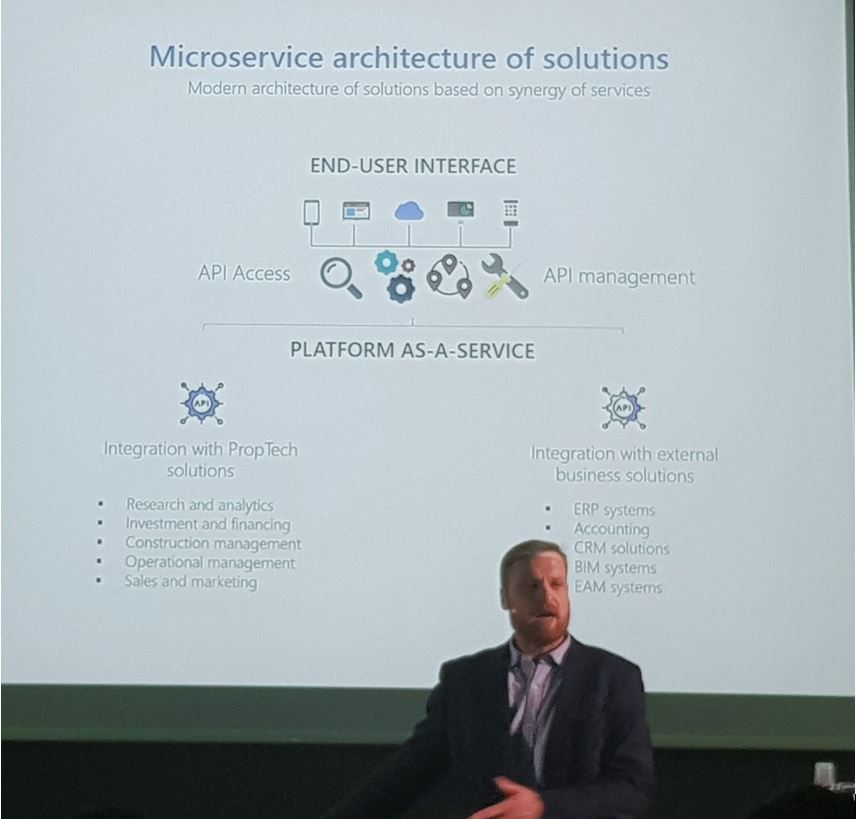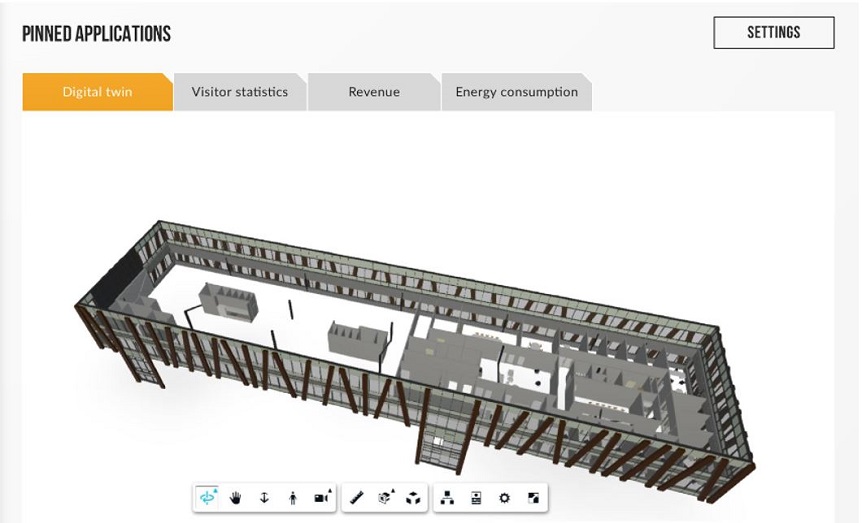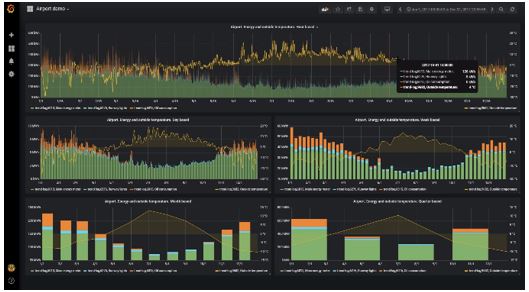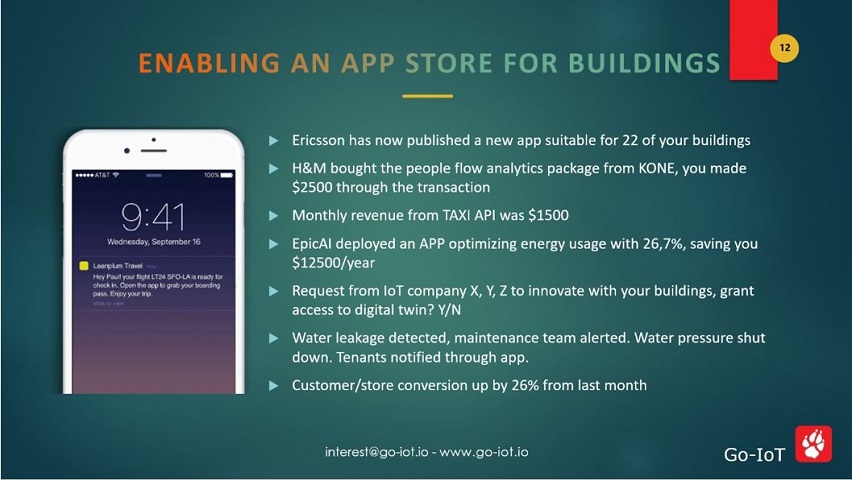|
January 2019
AutomatedBuildings.com
|
[an error occurred while processing this directive]
(Click
Message to Learn More)
|
Cheating
“Death by 1000 cuts”
The
technological approach to a more sustainable future will most likely
lie in harmonizing BACnet and IoT underneath a BACnet umbrella,
utilizing Haystack and the likes to get things to talk together in a
better way and to make it easier to apply analytics as well. Part 1 of 2
Part 2 of 2
Enabling
an open innovation platform for the Real Estate sector
|
 Nicolas Waern Nicolas Waern
CEO
Go-IoT
|
The thing is, we
just want to make people healthier, to help reduce global heating
faster than ever before, as well as democratizing smart city innovation
for the greater good on a global scale of course. Luckily, we think
we’ve found the recipe!
The
technological aspects were the focus in my last post, and this time
I’ll elucidate more on the business side of things. I copied a couple
of questions below from my previous post, which hopefully will get you up to
speed faster.
What if Real Estate owners could get their
buildings connected, up to a point. And then let others innovate with
their assets in a standardized way?
And what if end users could come up with
the solutions themselves? We are already providing open modular hardware towards system integrators
and the maker space, but what about the tenants? Is there a way to get
them involved them in this space as well?
This
will be the focus of this article; Enabling an open innovation platform
for the real estate sector.
The
current state of things
Death
by 1000 cuts is not only about the technological integrations that need
to happen in order to squeeze out value from existing buildings. It is
also about the business models that exist today and where data resides.
The
lay of the land today is that system integrators are locked into global
giants who want them to use their products exclusively. Which in turn
locks in system integrators into their respective solutions and their
customers into whatever brand, make, their maintenance guys are
comfortable with, which leads to little or no room for innovation,
except limited to the hands of the global giants.
As
Ira Goldschmith states here:
BASs that use interoperating controllers
from multiple manufacturers (except within the Tridium platform, but
that’s a unique case) continues to be an (unfortunate?) rarity.
Tridium
and the Niagara framework have fantastic solutions, no doubt. And
wherever we go, people are using it. But even though they do the
harmonization, everything is tied to their proprietary system
underneath. And what this does, is that locks in everyone to their
platform making it difficult for others to innovate on, and with,
buildings today.
One
of the major reasons why the industry has been slow to change is that
the traditional business models are mostly about fixing stuff that has
broken down. Or visits to sites, not based on real data, but of
scheduled maintenance visits. Money gets paid by the time you take to
fix stuff, and not so much the value of the service.
And
on the other side, we see cool sensor solutions which fix a certain
need. But this business model is not sustainable either, and there will
be certain death by 1000 cuts, that’s guaranteed.
Real
estate owners, consultants, service providers, IoT companies, Energy
Management providers, system integrators and tenants have everything to
gain by engaging in a more open, and platform-oriented business model.
Companies have to disrupt themselves, but that in itself is a hard nut
to crack for any industry. Surveying the landscape of companies out
there, the only must-haves are the ones owning real estate themselves.
But
therein lies the largest challenge, in that they don’t really want to
digitize with their assets, because most of them don’t see any reason
to do so. This is certainly not their fault, but rather other
companies, not being able to show where the value actually is, and why
digitalization is a must. And that is the key to the future. To be able
to show how the platform economy will spark an era of collaboration,
desperately needed to get faster to innovation when working with
buildings.
Recently,
while attending an event focusing on Real Estate, Architecture and
Construction, at Recotech
at Slush in
Finland, the platform economy was the talk of the town.

Figure
1. Detailing the platform-as-a-service concept - Ivan Nokhrin
Black
boxing buildings in terms of technology and opening one API to
everything is indeed vital in order to create a standardized path
towards the future. This opens buildings for the world of not only
analytics but also services to be created in a standardized way on top.
But
what does it really mean? And who should be in charge?
An
open innovation platform for… everyone?
Having
seen the separate worlds and need for harmonization between new
technology and existing technology in buildings during the last year,
we felt that something needed to be done. We got a very progressive
real estate owner onboard, Uppsala Kommuns Fastighetsbolag, who wanted
to digitize their assets with Manne Johansson in the lead. In this
process, we also managed to get a development firm, Devies, to
understand the potential of the platform economy quickly, and an app
store for buildings approach. They were quick to develop the onsets of
an MVP of the platform to be.
Figure
2. An open innovation platform for real estate owners
The
real estate owner’s idea, which we have the technology for, is to
combine the digital world with the physical. The digital twin concept
is in focus, and we have partners signed up to convert any physical
space into the digital realm.
And during our initial discussions, we could see a need for transparent
and aligned business processes from a vertical and horizontal
perspective, inside and outside of the company — increased efficiency,
platform-based automation and integration of solutions as well as more
modern applications for any user.
“The focus should be on a fluid
interaction between the digital and the
physical, viewing technology as an enabler for an improved quality of
life and a more vibrant city.” – The building whisperer
They
have also seen the need of collaborating amongst different
stakeholders with their buildings in focus. But instead of just tying
documents to certain assets, they want to leverage the digital twin
concept and pool all work around the real/digital assets. And this is
exactly why we are utilizing a part of the world’s leading automation
protocol as “an adapter” to get data in and out of buildings in a
standardized way.
Tying
ERP Systems, CRM Systems, Accounting, BIM, EAM systems, together
with the existing portfolio has never been easier, and this is exactly
what their intent is. And, obviously, we are finding this really
exciting, because this is exactly what BACnet Web Services is made to
do! (NB. The article is from the legend Steve Tom, Ph.D., P.E, and
was
written in 2004!)

Figure 3. Digital twin of one of the areas
of a Mall in Sweden
One
of the first things we are in talks of doing next year is to bring
all their buildings into the cloud, reaching a normalization of digital
maturity. We have already done this for over 500 buildings in Norway,
working closely with system integrators.
The
benefits of the platform
economy are to easily attach any services
outside the traditional BAS-world into the world of BAS, thus making
any building Cloud-, and Go-IoT - ready.
We
enable this with our software stack attaching sensor data from
anywhere, and black boxing it together with existing data, thus
allowing for split-second visualization and analytics. Below is a
screenshot from our video enabling Grafana reading data from
BACnet
objects, in this instance, BACnet trend logs.

Figure
4. Grafana visualization from 8 years of Airport data
We
have also done this with Node-Red, DGLux,
and we are partnering up
with dozens of companies right now in order to get the best package
solution for our customers. Because that is what is the logical
solution to the 1000 cuts problem: a platform for everyone,
democratizing smart building, and city innovation.
But who should be in
control?
Is
there
such a thing as controlling the platform economy?
Talking
to especially
real estate owners, we see that the “you can do
everything approach” doesn’t work. And the “death by 1000” cuts
approach doesn’t cut it anymore either. Well, that’s not true. It does,
and that is the problem. New entrants might not have felt it yet, but
the ones with some foresight will see that there will be integrations
challenges down the line.
By
enabling an open
innovation platform on top of buildings, we can
easily see a lot of interesting benefits. At first glance, it might be
for real estate owners primarily, but I would argue that there’s more
to meet the eye.
System integrators, FM companies, as well as any “IoT – Proptech”
company are facing integration challenges everywhere. Bringing up older
buildings to make them wise, is everything but easy. Therefore, a
platform economy means that there will be a standardized way of
integrating to all buildings. And what this does is that it opens
tremendous opportunities for everyone that has an interest in the
future of buildings and services, not only real estate owners.
Benefits with the platform economy
- Real estate owners will be in control of their
past, present and future data and applications
- They can invite others to their API instead of
falling into the API-Hell as discussed before
- Access all buildings data from the cloud, the edge,
wherever, in a secure way
- In addition to inviting others to innovate with
their buildings, they can also now invite dev companies and write
applications for themselves in whatever language they want
- Real estate owners will get the power away from
proprietary solutions and path dependency, not having to ask others to
do things with their own data, moving towards path creation.
- Applying Machine learning and AI much faster both
in the Cloud and at the edge, incurring energy savings faster than ever
before, as well as speeding up the time for new insights.
There’s no end to the possibilities, and the best part is that it
speeds up the time for value creation when innovating with buildings.
- Tenants themselves might also get invited to an API
for their building, developing an interface to control lighting, room
temperature, you name it, for themselves, and other tenants. Talk about
Edge-ification!
Real estate owners can focus on what they do best, and any solution
provider will be able to do what they do best, not having to worry
about messy integrations. FM companies and technical managers will have
a field trip integrating newer technology with existing building
automation systems in a standardized way.
[an error occurred while processing this directive]And
everything will be open, transparent and utilizing the digital twin
concept. Definitely a New Deal 4 Buildings, and people!
Innovation for the Nation(s)
The potential to include other metrics such as weather data,
accounting, energy, etc., becomes a breeze. Managers will get answers
to questions such as;
- "How often does someone use our conference rooms
when the temperature outside is above 25 degrees Celsius"?
- “How much space utilization do we have today
in buildings worth more than $10Million, and where the sun is shining?”
- “How much money could we make if we increase space
utilization by 10% and extend usable hours by 20%, in all of
our___*insert type room*?”
These are questions that not only will be answered easily across the
portfolio, but they will also be tied to digital twins, enabled by the
platform economy.
Let’s say we have 100 buildings; all commercial buildings, with some
level of digital maturity. And we buy into the “Smart Building as a
Service” – approach. What’s next? We get the platform in place, and it
comes with 6 services from different vendors. One could be energy
analytics provided by company A. The next lighting control by company
B. Strategic consultancy around anything related to their buildings in
an agnostic way, company C. BIM/Digital twin creation through company
D. And classic Energy Management system as company E. And traditional
system integration from a Mass System integrator, company F.
Everything tied to one platform from the top, and with data streaming
from all buildings from the edge. Since it is a seamless experience
from the edge to the cloud, and with traditional BAS and IoT->
services, sensors, there’s logic to be made to the portfolio, instead
of just buildings. And companies are not tied to proprietary solutions
anymore, and they can mix and match completely because all the
technical stuff will be taken care of.
New ways of making money
Digitizing real estate utilizing the platform economy opens up new ways
of not only saving money by making processes more efficient; one of the
most exciting prospects of having an App-Store for buildings is that it
opens up dramatic ways of making money as well.
Offering new solutions through partners to tenants or any customers in
the portfolio will incur new ways of looking at building innovation.
- Tenants will get a better experience and be more
likely to stay
- Future tenants wanting to hire will have better
tools, applications at their disposal and would favour a “smarter”
building more than a traditional one
- Solutions will go through the platform, instead of
directly to customers which allows for new ways of making money through
revenue sharing
- By getting access to more data from real estate
assets, insights can be made, as well as the opportunity to sell data.
Banks, insurance companies, estimators, and anyone else that could
utilize real estate data in order to make their life easier.

Figure 5. Making money on buildings while
sleeping
Making money while sleeping will be the new norm for buildings and
we’ll see a shift in real estate value increasing innovation and data
generation. This will create a win win win for companies, people,
climate and everyone living in cities today. I am sure of it!
Final words
What would you do if you could wish for applications to utilize at
work, at home, at the hotel? I for one would love to have personalized
lighting and indoor climate settings that I could control at the
office, through voice commands of course, if need be.
The solution to the Death by 1000 cuts problem is that companies need
to define their box, and if not willing to step out of it, damn sure
find someone to partner up with that does. Being close-minded won’t
last for long, and there’s so much value to be created on top of
buildings that it blows my mind. Just imagine the economic benefits
we’ve seen with the platform economy for phones, cars, hotels, etc.
Imagine what people could do with a building if it was easy enough to
innovate on it.
The technology is here to do all that is required, but the solutions
need to be closely tied to that of a business case, and people need to
collaborate more. One big question that will come up more and more is
-“How much data per square feet/meter are you utilizing and what’s the
cash to data ratio per square meter”?
That’s a question I don’t think many companies can answer today. And
the way we’ll be able to answer it will be through collaboration.
Getting people in the same room from different disciplines is the key.
And hopefully, that room is perfectly ventilated, with outstanding CO2
levels. And if not, let’s pray we have the possibilities to change it
fast.
As always, don’t just sit around talking, and reading. Go out there and
do something! That’s the only way to learn, and magic happens when
collaborating with others.
- The Building Whisperer
footer
[an error occurred while processing this directive]
[Click Banner To Learn More]
[Home Page] [The
Automator] [About] [Subscribe
] [Contact
Us]